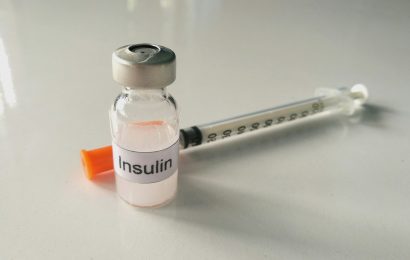So far in the nonnutritive sweetener series, we’ve looked at aspartame and sucralose, two very popular, if sometimes controversial, sweeteners. This week we’ll focus on another sweetener that hasn’t gained much in popularity, despite being around since 1988. The name of this sweetener is a bit strange: acesulfame-potassium, otherwise known as acesulfame-K or ace-K, for short. (For you chemistry buffs, you’ll remember that “K” is the periodic table of elements’ symbol for potassium.)
What is acesulfame-K?
Acesulfame-K was accidentally discovered in 1967 by a German chemist, but it wasn’t approved for use in beverages by the FDA until 1988, and for use as a general sweetener until 2003. Ace-K is 200 times sweeter than regular sugar and about as sweet as aspartame. This sweetener is currently used in more than 5,000 products in more than 100 countries. Surprisingly, perhaps, ace-K can be used in a wide range of products, including beverages, tabletop sweeteners, ice cream, desserts, snack foods, candy, and even non-food items such as toothpaste, mouthwash, vitamins, and medicines. Like other nonnutritive sweeteners, ace K is calorie- and carbohydrate-free, making it a decent choice for people who have diabetes.
Ace-K’s flavor is described as being “clean” with a “sugar-like” sweetness. However, it can have a slightly bitter aftertaste. This sweetener is often combined with other nonnutritive sweeteners, such as aspartame and sucralose. This sweetener is heat stable, which means that it can be used in cooking and baking.
What are the concerns about consuming acesulfame-K?
As with aspartame and sucralose, ace-K has also been rigorously tested. Based on results of more than 90 scientific studies, the FDA, as well as other, international regulatory agencies, have deemed this sweetener safe for the general population. Of course, not all agree with its safety rating.
The first safety tests done on this sweetener occurred in the 1970s. These tests hinted that ace-K could possibly be carcinogenic in rats. However, experts questioned the quality of the tests and the validity of the results. But concerns remained. In 1996, the Center for Science in the Public Interest (CSPI) once again called into question the safety of ace-K and urged the FDA to require more safety testing before it was allowed to be used in beverages. CSPI feels that this sweetener may be linked with causing cancer, and also points out that a chemical called acetoacetamide (a by-product of ace-K metabolism) might cause thyroid damage in lab animals. A study published in 2013 in the journal PLOS One indicated that “chronic use” of ace-K could affect cognitive function in mice.
Nonetheless, there are no convincing studies in humans that ace-k has any harmful effects on health. The Calorie Control Council refutes any claims that ace-K causes headaches, cancer, weight gain, or gastrointestinal side effects.
How much acesulfame-K is safe to use?
The ADI (acceptable daily intake) for ace-K is 15 milligrams per kilogram of body weight per day for both adults and children. As an example, a 150-pound person could safely consume 1,020 milligrams of ace-K every day over his or her lifetime without any adverse health effects. For reference, a 12-ounce can of Coke Zero contains 50 milligrams of ace-K, so to reach the ADI of 1,020 mg, one would need to drink 20 cans of this diet soda. Likewise, the same 150-pound person would need to consume about 20 packets of the sweetener in one day to reach the ADI for ace-K.
In my opinion, ace-K isn’t a highly popular sweetener and there are other sweeteners to choose from that you may find more acceptable. However, as I’ve written before, it’s up to you to decide if acesumfame-K (or any sweetener, for that matter) is a good choice for you.
More on sweeteners next week!
If you’re struggling with weight, you may be wondering how to stop eating more than you need. Bookmark DiabetesSelfManagement.com and tune in tomorrow to find out what has worked for Type 2 diabetes veteran Martha Zimmer.





